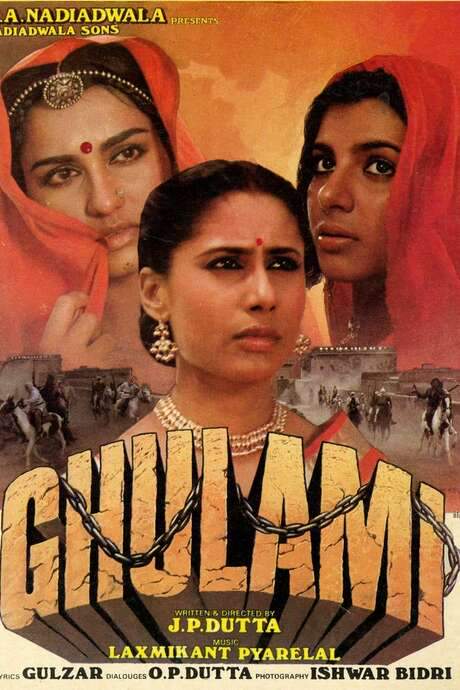
Ghulami
Year: 1985
Runtime: 171 mins
Language: Hindi
Director: J. P. Dutta
Set in the border town of Fatehpur on the India‑Pakistan frontier, the story follows Ranjit Singh Choudhary, a young man branded a rebel by his schoolmaster and by his father’s employer, Bade Thakur. Unwilling to accept the exploitation of his father’s generation, who have become economic slaves to the upper‑caste Thakurs that lend them money, Ranjit confronts the systemic injustice and fights for his fellow farmers.
Warning: spoilers below!
Haven’t seen Ghulami yet? This summary contains major spoilers. Bookmark the page, watch the movie, and come back for the full breakdown. If you're ready, scroll on and relive the story!
Timeline – Ghulami (1985)
Trace every key event in Ghulami (1985) with our detailed, chronological timeline. Perfect for unpacking nonlinear stories, spotting hidden connections, and understanding how each scene builds toward the film’s climax. Whether you're revisiting or decoding for the first time, this timeline gives you the full picture.
Last Updated: October 09, 2025 at 14:41
Unlock the Full Story of Ghulami
Don't stop at just watching — explore Ghulami in full detail. From the complete plot summary and scene-by-scene timeline to character breakdowns, thematic analysis, and a deep dive into the ending — every page helps you truly understand what Ghulami is all about. Plus, discover what's next after the movie.
Ghulami Summary
Read a complete plot summary of Ghulami, including all key story points, character arcs, and turning points. This in-depth recap is ideal for understanding the narrative structure or reviewing what happened in the movie.



